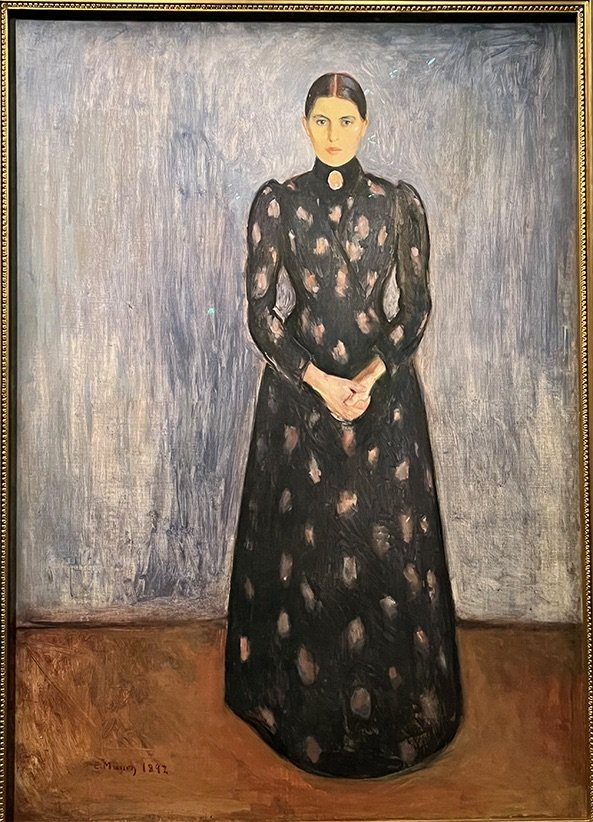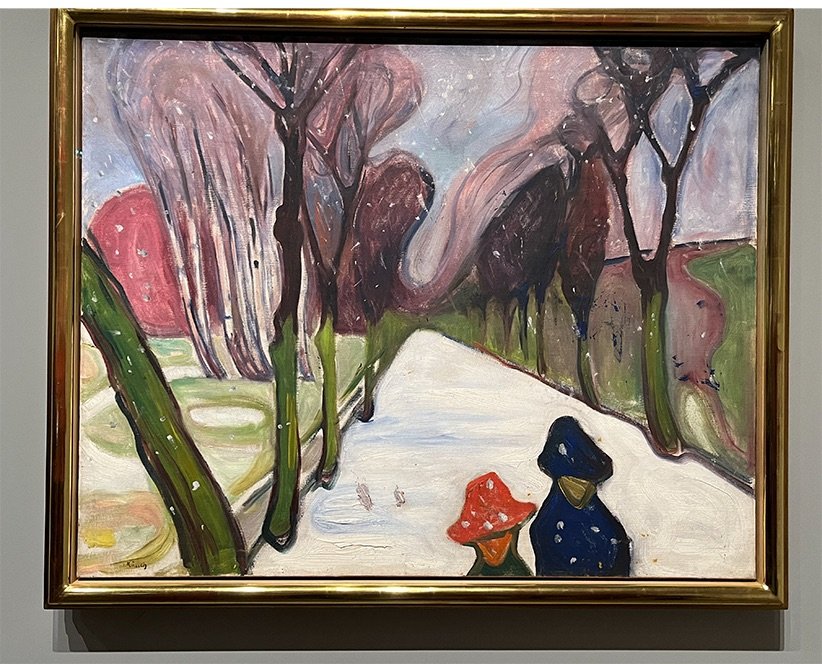Rendez-vous with Edvard Munch.
2mins
During my recent trip to Paris, I was lucky to catch one of the last days of the exhibition Edvard Munch : A poem of life, love and death at Musée d’Orsay. This is just a little summary of my highlights from the curation which I thoroughly enjoyed as it explored many of his themes and recurring motifs of his 60 year career.
I’ve not really looked that closely at his career in the past, so thought this would be a great opportunity to discover more. Even though the tickets are sold in timed slots, the exhibition was heaving with people - we were literally queueing to view each painting! I wasn’t expecting it to be so busy on a cold Tuesday morning in January, but hey-ho. Thankfully though, everyone was polite and considerate as we navigated around each other to see paintings, prints and drawings.
Summer Night, Inger on the Beach. 1889. Inger was Munch’s younger sister.
Inger in Black and Violet . 1892.
The first room showed large scale figurative paintings with atmospheric but realistic portraits. I love the colours and forms of the bolders in ‘Summer Night’ - I know it’s a portait of Inger his sister, but it’s the way he has captured the landscape of the beach in Oslo that really caught my attention. ‘Inger in Black and Violet’ is a very large and imposing painting, full of tension. Her controlled pose with clasped hands and a gaze which looks directly at the viewer, to me makes it feel like she is containing some very strong feelings or serious news that will be aired at any moment. The scale of the painting means that she towers above the viewer, well definitely me at 5’2. It’s both beautiful and slightly unnerving.
Despair 1892
The Scream. An early print of the work, for which each copy was enhanced by hand.
Despair was the first painting from a series which featured Munch’s iconic Scream with all the key components. In a poem, (he wrote poetry too) Munch explains the origins of it being a biographical event when he was gripped with anxiety while watching the sunset in an ill and tired state. The Scream is one of these paintings that we have all seen so often that we kind of stop seeing it, if you know what I mean. So, to see it in the context of his other work made me look at it afresh which I am grateful for.
The Sick Child 1926
By the Deathbed 1895
Munch is an absolute master of painting emotion and atmosphere in a way that speaks to us all. Grief and suffering are also recurring themes. The Sick Child and By the Deathbed tell the story, and weight of feeling around the sickness and death of his elder sister Sophie. Oooof!, You feel like you are in there with them!
Dancing on the Beach 1899-1900
Fresh Snow on the Avenue 1906
The 2 landscapes pictured above were among my favourites in the exhibition. There is something magical about the way he uses colour and paints forms that are on the verge of abstraction. Very inspiring, I could have looked at these all day long.
Self-Portrait with skeleton arm 1895. Lithography
The Sun 1912
The work that had the most impact on me was The Sun (above). If you read my previous blog about the rest of my Paris trip then you will know this already, but as I stood in front of this I could feel myself well up with emotion. It is a painting about hope with each new day, the regenerative power of light and knowledge and it moved me instantly. At the time I felt a bit self conscious of my slightly watery eyes after seeing this powerful painting but now I wonder why? If someone was moved to tears (in a good way) from seeing one of my pieces, I’d be made up. This is why we need art in our lives, people, it has the ability to speak to us in a language of no words and across time.
What piece of art has moved you to tears? I’d love to know, leave a comment below or drop me an email.
If you want to read about the rest of my Paris trip and see the contemporary art I found click here Bonjour Paris










